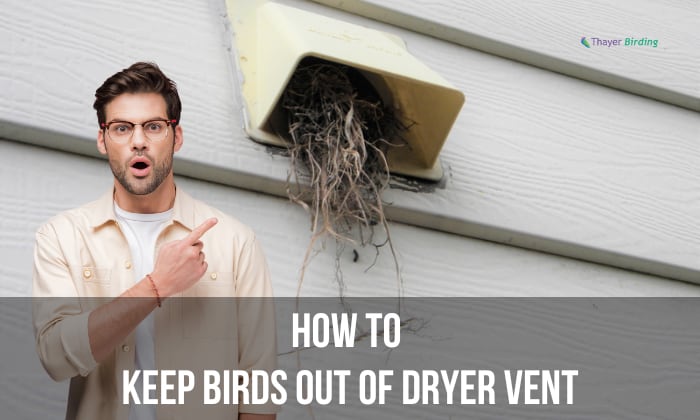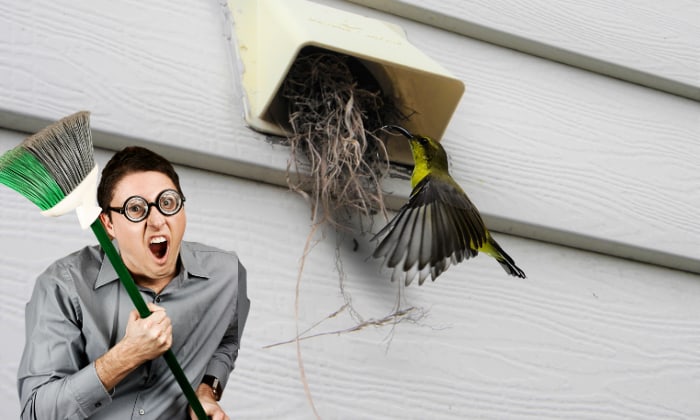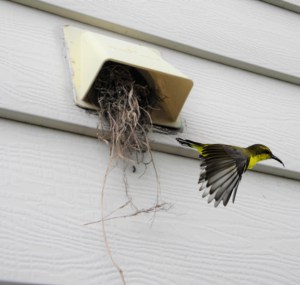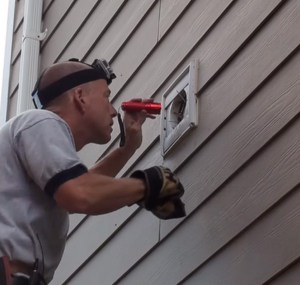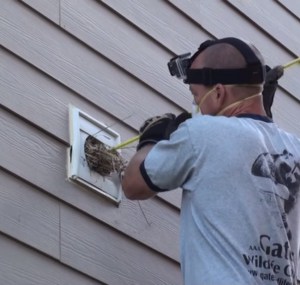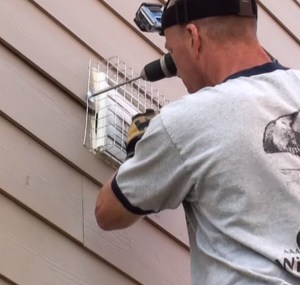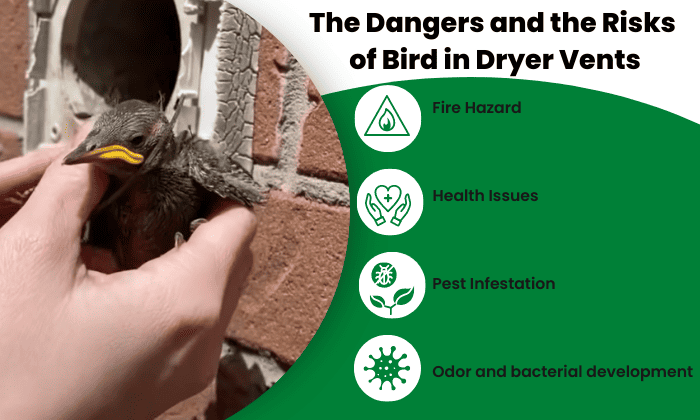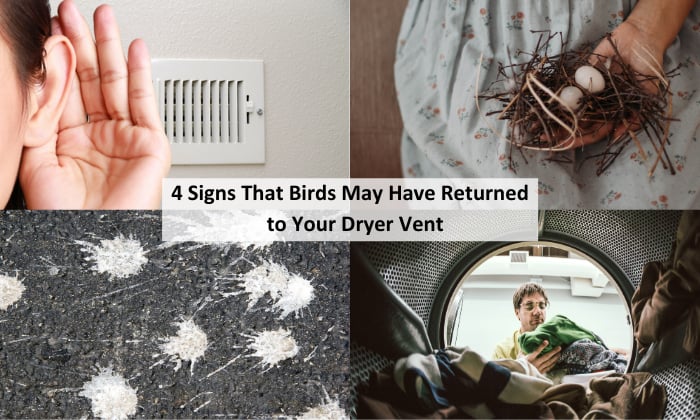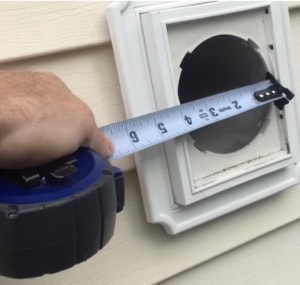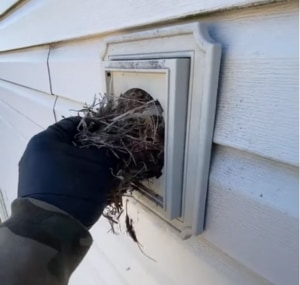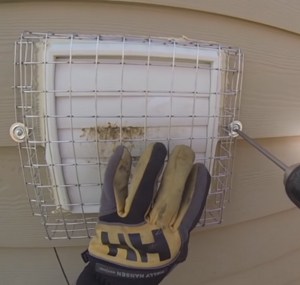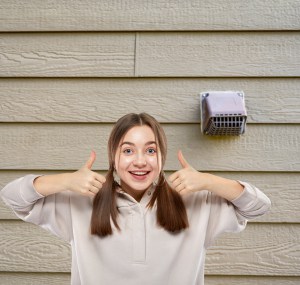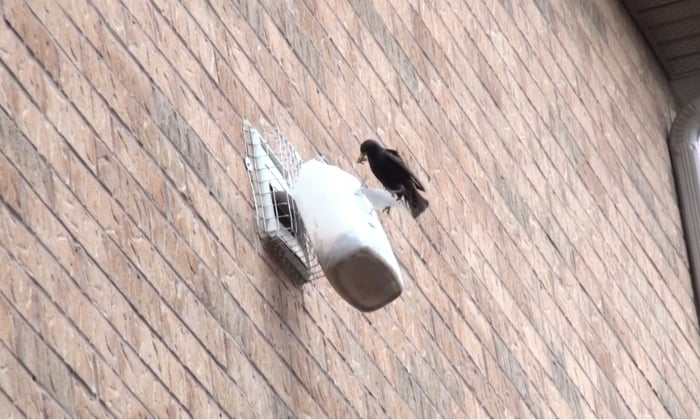Is there a bird stuck in the dryer vent of your home? If yes, you should call a professional to get it out. And if this issue is something that keeps happening, now is the time to learn how to keep birds out of dryer vent.
We know how important this task is, since the vent outlet must be free of obstructions so that your clothes can dry properly. That is why we have this article with everything you need to understand about this topic and what measures to take. Let’s get started!
Table of Contents
Ways to Keep Birds Out of Dryer Vent
Lint buildup is not the only vent blockage issue most homeowners have to face. During spring, many birds are looking for a place to build their nest, and the dryer vent is one of their favorites.
The first step to addressing birds in your dryer vent is to take out the nest. This can be difficult, especially if your vent has tricky access. In this case, it would be best to contact a wildlife removal expert. Otherwise, you can handle the task on your own.
What you need
- Rubber gloves
- Vent cleaning tools
- Screwdriver
- Vacuum
- Flashlight
- Leaf blower
Step 1. Pick a perfect time
The ideal time to do this is when the birds leave their nests to forage for food.
Step 2. Suit up for protection
Wear rubber gloves to minimize contact with the bacteria and parasites that might be in bird’s nests and poop.
Step 3. Check the vent before removing the nest
Open the vent and check if there is any baby bird or egg. If there are none, proceed to remove the nest and vacuum the remaining nesting materials.
Step 4. Clean the back and around the vent
Go to the back of the dryer and repeat the process. Make sure there is no dirt or nesting material left around the vent or its hose. Properly dispose of the nest and any bird dropping using a vacuum and blower.
You can remove the vent hose to check it using a screwdriver or by pressing on the hose clamps.
Note: If you find bird eggs or baby birds in the nest, leave them there until the eggs have hatched and the birds are ready to leave. Or you can contact a professional for removal.
Effective Bird-proofing Techniques
For bird nest prevention, here are some things to try:
- Manual weekly maintenance checks
Even after removing a nest from the vent, you can still expect the birds to come back to your home. Thus, you should check your vent every week and look for any signs that they’re putting together nesting materials again.
- Switch to grate doors for your vents
If you have flap doors on your vents, the best decision you can make to keep the birds away is to switch them out with grate doors. This type of door is more tricky for birds to bypass.
- Invest in a vent guard
A bird guard vent cover is often prefabricated and sold in hardware stores or online. It will prevent birds from getting into your vent while giving you easy access to the ventilation.
- Use a vent closure system
This device has a shuttle cup that will open whenever the dryer is operating and closes to cover the vent hole the rest of the time. In addition to birds, the closure system also keeps out insects and other critters.
These tips are simple and effective ways to prevent birds from returning and building another nest in your dryer vents. If the problem seems too much for you to handle, you can always contact a professional to get the job done.
The Dangers and the Risks of Bird in Dryer Vents
A blocked dryer vent is a serious issue. If not given attention as soon as possible, you risk facing any or all of these dangers. If you are thinking of putting off addressing the issue once you discover it, think again.
- Fire Hazard
Bird nest in dryer vent fire hazard is a common danger. What happens is the hot air cannot get out of the vent, resulting in temperatures high enough to cause a fire, igniting the lint buildup or nesting material.
- Health Issues
Avians are known carriers of different strains of harmful pathogens like salmonella. They can easily transfer these diseases to humans through direct contact. With birds taking over your dryer vent, the spores can get into the air you breathe and pose a health risk.
- Pest Infestation
Another dangerous thing birds carry with them is mites. These pests can infest anything a bird comes in contact with for an extended time, like their nests. And if these nests are in your vent, the mites will reach you in no time through your laundry.
- Odor and bacterial development
Bird feces and nests can leave a terrible smell in your vent, and the matter will worsen if the birds die and you’re still putting your clothes in the dryer. The odor and bacteria that come from avians blocking your air ducts is something no homeowner would like to deal with.
If these are not enough reasons to address the birds in your dryer vent, I don’t know what will.
Signs That Birds May Have Returned to Your Dryer Vent
Despite keeping birds out of your vent, there is still a chance that they could return anytime. The following will give you hints about their presence.
- Chirping, squawking, or scratching sounds coming from the vent
- Grass, twigs, and other nesting materials sticking out and scattered around the vent
- Bird droppings under the duct and vent
- The dryer is not working properly, such as clothes taking longer to dry
Professionals advise homeowners to inspect and clean dryer vents once every year. If you have a big family with many kids, increase it to twice a year.
It would be wise to keep an eye out for any odd signs which will tell you need to get your dryer vents checked sooner than expected. And that includes birds.
Dryer Vent Bird Guard Installation Guide
It is fairly easy to install a bird cover for dryer vent. Read through this step-by-step guide.
1. Find the right bird guard for your vent
Check your vent and list down its dimensions before ordering online or heading to the store.
2. Clean your vent
Ensure the vent is clean and working properly. You should feel a breeze when running the dryer; otherwise, you need to get your vent fixed.
3. Position the guard over the opening
Mount the vent guard following the instructions in the packaging. Screw the cover securely.
4. Enjoy a bird-free vent
Now, you don’t have to worry about birds making a nest in your vent. But you still need to have your vent cleaned every year to prevent build-up.
Frequently Asked Questions
What kind of birds nest in dryer vents?
Cavity-nesting birds such as starlings and house sparrows are two of the most common ones you can see occupying dryer vents in many homes.
Who to call to get birds out of dryer vents?
A professional bird removal expert is the man for the job. They can get out bird trapped in dryer vent in a gentle and humane manner with the proper tools, equipment, and knowledge. Besides, they can also clean your vents and take proper measures to prevent re-entry.
How much does it cost to remove birds from the dryer vent?
The cost of a dryer vent cleaning and removal of birds and their nests can range from $150 to $400. Pricing could vary depending on:
- Types of services
- The complexity of the situation
- Location of the vent (higher floors require higher fees)
- Vent material
- Length and bends of the vent
- Labor
The cleaning company will check your vent and quote a price for the service.
How to stop birds from nesting on side of house?
Prevent birds from nesting and from building a nest before spring comes. If you have a high traffic of starlings and house sparrows in your area, it would be best to have some measures in place.
- Restrict cavity entrance of dryer vents, pipes, tunnels, chimneys, and other small holes that look like a candidate for cavity nesters’ breeding sites.
- Line uneven blocks on ledges if sloping is not an option.
- Hang mirrors, wind chimes, and aluminum foil near areas where the birds are more likely to build their nests.
- Remove feeders, food, and water sources on your property. This will make your yard less enticing to a family of birds.
- Prune trees to create an open space and remove the benefit of nesting privacy.
Conclusion
When it comes to how to keep birds out of dryer vent, prevention is always the key. But if you are already facing a situation where you could not protect your dryer vents, all this information is useful to have.
Do you know someone who is struggling with birds in dryer vent? You can share this article with them. We hope all the tips we shared worked for you. If you have other effective methods, comment below!

George and I became friends after a birdwatching trip with our new group. And we have been enjoying every adventure together. When he told me the idea of establishing a site that shares our experiences and fun, I immediately agreed. After trials and errors, here we have Thayerbirding.


